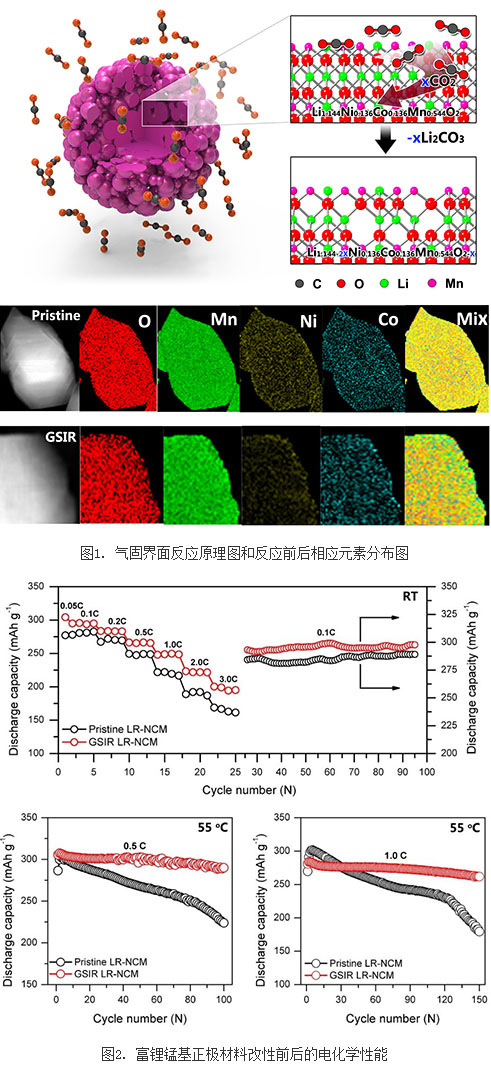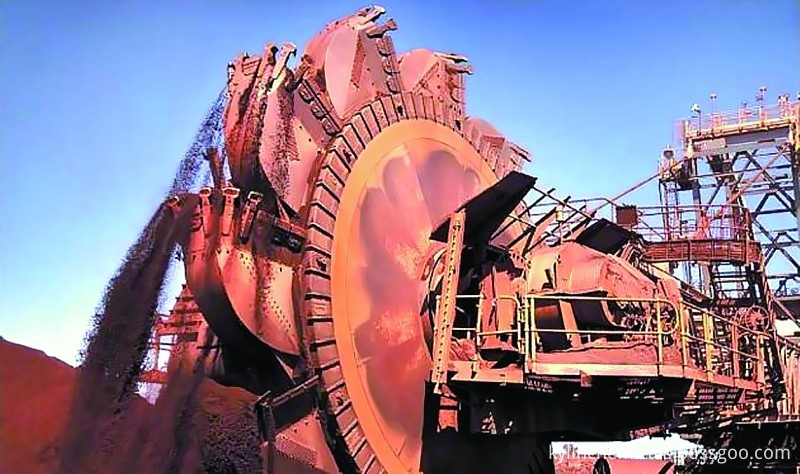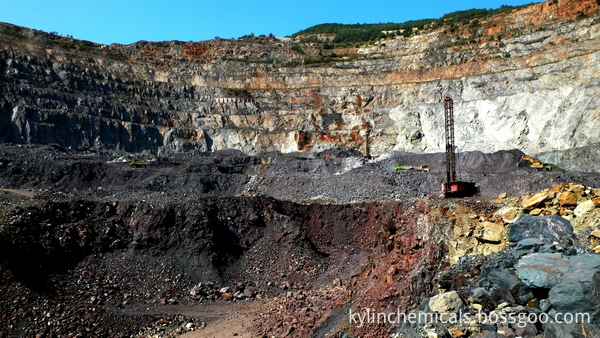
At present, electric vehicles are faced with problems such as short cruising range and insufficient safety, which restricts their large-scale promotion. If the electric vehicle has a cruising range equivalent to that of a fuel vehicle (~500 km), consumers will no longer have mileage anxiety when driving an electric vehicle, which is conducive to the large-scale promotion of electric vehicles. At present, the commercial power lithium battery energy density is generally around 150Wh/kg, to achieve double the mileage, power lithium ion battery energy density must be doubled to 300-400Wh/kg. From a technical perspective, the use of higher specific capacity positive and negative materials is the most direct and effective way to improve the energy density of batteries. Among the currently known positive electrode materials, the discharge specific capacity of the lithium-rich manganese-based positive electrode material is as high as 300 mAh/g, which is about twice as large as the discharge capacity of currently used cathode materials such as lithium iron phosphate and ternary materials, and thus is regarded as new. The ideal choice for a generation of high energy density lithium battery cathode materials. Although the lithium-rich manganese-based cathode material has an absolute advantage in discharge specific capacity, it must be applied to the power lithium battery. The following key scientific and technical problems must be solved: First, reduce the first irreversible capacity loss; second, increase the rate performance. And cycle life; The third is to suppress the voltage decay of the cycle.
The research team led by Liu Zhaoping and Xia Yonggao, the Power Lithium Battery Engineering Laboratory of the Ningbo Institute of Materials Technology and Engineering, Chinese Academy of Sciences, has been dedicating to the research and development of lithium-manganese-based cathode materials for many years, including preparation methods, composition optimization, and charge-discharge mechanism. A series of meaningful research work has been done on surface modification and other fields, and a wealth of research results have been obtained (J. Mater. Chem. A 2011, 21, 2544; Inter. J. Electrochem. Sci. 2011, 6, 6670; Electrochim. Acta, 2012, 66, 61; Electrochim. Acta, 2012, 80, 15; J. Power Sources, 2012, 218, 128; J. Power Sources, 2013, 240, 530; ACS Appl. Mater. Interfaces, 2014, 6 , 9185; J. Power Sources, 2014, 268, 517; Electrochim. Acta 2014, 123: 317; J. Power Sources, 2014, 268, 683; Chem. Eur. J., 2015, 21, 7503; J. Mater Chem. A, 2015, 22, 11930; J. Power Sources, 2015, 281, 7).
In 2013, the research team developed a novel gas-solid interface modification (CN201310416745.1, PCT/CN2013/088597), which allowed the formation of uniform oxygen vacancies on the surface of lithium-rich manganese-based cathode material particles, thereby greatly increasing the material's The first charge and discharge efficiency, discharge specific capacity and cycle stability. Since then, they have cooperated with many domestic and foreign research teams and collaborated in innovation. Using advanced analysis and characterization methods and theoretical calculations, they have studied the mechanism of lithium ion deintercalation in the presence of oxygen vacancies. Among them, Professor Zhu Yimei and Bruce Wu of the Brookhaven National Laboratory (BNL) used advanced transmission electron microscopy to observe oxygen vacancies. Professor Meng Ying of the University of California, San Diego (UCSD) used the neutron diffraction of the Oak Ridge National Laboratory to prove The presence of oxygen vacancies, Dr. Wang Jun of the University of Münster, Germany, used in-situ electrochemical gas-phase mass spectrometry to study the changes of lattice oxygen during charge and discharge. Qiu reported the use of X-ray diffraction/absorption spectroscopy of Shanghai Synchrotron radiation source to prove oxygen. The vacancy does not change the crystal structure of the material. Dr. Zhang Minghao of the Meng Ying Group also found that oxygen vacancies increase the lattice oxygen activity of the material through DFT theoretical calculations. The research work was published in Nature Communications 2016, 7, 12108, which was highly praised by reviewers. This work proposed for the first time that the first charge-discharge efficiency and rate performance of the lithium-rich manganese-based cathode material were improved by increasing the activity of the lattice oxygen, providing new ideas for the modification of the material. In addition, the gas-solid interface modification method is relatively simple, controllable and easy to implement engineering, which provides a new approach for the engineering development of high-performance lithium-rich manganese-based cathode materials. At present, the research team is making use of this modification method to focus on the pilot development of lithium-rich manganese-based cathode materials.
The research work was led by the Chinese Academy of Sciences's "Strategic Pilot A" project, "The Transformational Nano-industry Manufacturing Technology Focus" Special "Long-term Air Power Lithium Battery" Project (XDA09010101) and the CAS-DOE International Cooperation Project "The New Generation of Lithium-ion Batteries Rich in Lithium-Manganese Based Cathodes. "Structural analysis of materials and lithium storage mechanism" (174433KYSB20150047) and Ningbo City's new generation of lithium-ion battery materials innovation team (2012B82001) to provide substantial funding.
Kylin Chemicals manfacturers & supplies high performance flocation flocculants & collectors, serving the various mining industries like coal, phosphorous, copper, lead, nickle, gold, silver, potassium & sand-washing, etc. Our advanced manufacturing facilities and effective quality control systems, ensures every delivery of goods fully meets/exceeds our customers` end using needs. Today, our flocation flocculants & collectors have been widely accepted by various mining industries in Southeast Asia, Middle East and Latin America.


Flotation Flocculants & Collectors
Flotation Flocculants & Collectors,Potassium Amyl Xanthate,90% Potassium Amyl Xanthate,Industrial Potassium Amyl Xanthate
Kylin Chemicals Co., Ltd. , http://www.kylin-chemicals.com